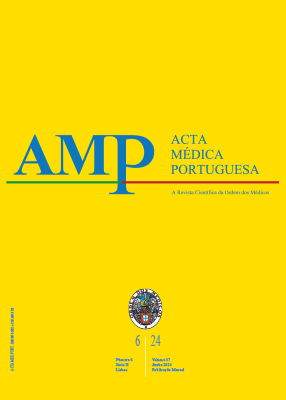Acute Iron Poisoning: A Case of Fulminant Hepatic Failure
DOI:
https://doi.org/10.20344/amp.21071Keywords:
Drug Overdose/complications, Ferrous Compounds/poisoning, Liver Failure, Acute/chemically inducedAbstract
Acute iron poisoning is an exceedingly rare occurrence, mainly when resulting from intentional ingestion in adults. It can lead to multi-organ toxicity and, in severe cases, may evolve into acute liver failure and cardiovascular collapse, which are the main causes of death. The clinical outcome is largely dependent on the amount of elemental iron ingested and the readiness of treatment, which includes support, early intestinal decontamination and deferoxamine. Despite timely intervention, acute liver failure can be life-threatening, with liver transplantation being the only potentially life-saving measure. In this case report, we describe a case of severe acute iron poisoning due to intentional ingestion that led to fulminant liver failure, which was successfully managed with liver transplantation.
Downloads
References
Kroeker S, Minuk GY. Intentional iron overdose: an institutional review. CMAJ. 1994;150:45.
Kundavaram P, Abhilash P, Arul J, Bala D. Fatal overdose of iron tablets in adults - case report. Indian J Crit Care Med. 2013;17:311-3. DOI: https://doi.org/10.4103/0972-5229.120326
Yesiler FI, Sandur U, Demirel A. Acute iron poisoning: a case report. MOJ Clin Med Case Rep. 2018;8:16-8. DOI: https://doi.org/10.15406/mojcr.2018.08.00230
Robertson A, Tenenbein M. Hepatotoxicity in acute iron poisoning. Hum Exp Toxicol. 2005;24:559-62. DOI: https://doi.org/10.1191/0960327105ht564oa
Kozaki K, Egawa H, Garcia-Kennedy R, Cox KL, Lindsay J, Esquivel CO. Hepatic failure due to massive iron ingestion successfully treated with liver transplantation. Clin Transplant. 1995;9:85-7. DOI: https://doi.org/10.1111/j.1399-0012.1995.tb00303.x
Howland MA. Risks of parenteral deferoxamine for acute iron poisoning. J Toxicol Clin Toxicol. 1996;34:491-7. DOI: https://doi.org/10.3109/15563659609028006
Yu D, Giffen MA Jr. Suicidal iron overdose: a case report and review of literature. J Forensic Sci. 2021;66:1564-9. DOI: https://doi.org/10.1111/1556-4029.14701
Downloads
Published
How to Cite
Issue
Section
License
Copyright (c) 2024 Acta Médica Portuguesa

This work is licensed under a Creative Commons Attribution-NonCommercial 4.0 International License.
All the articles published in the AMP are open access and comply with the requirements of funding agencies or academic institutions. The AMP is governed by the terms of the Creative Commons ‘Attribution – Non-Commercial Use - (CC-BY-NC)’ license, regarding the use by third parties.
It is the author’s responsibility to obtain approval for the reproduction of figures, tables, etc. from other publications.
Upon acceptance of an article for publication, the authors will be asked to complete the ICMJE “Copyright Liability and Copyright Sharing Statement “(http://www.actamedicaportuguesa.com/info/AMP-NormasPublicacao.pdf) and the “Declaration of Potential Conflicts of Interest” (http:// www.icmje.org/conflicts-of-interest). An e-mail will be sent to the corresponding author to acknowledge receipt of the manuscript.
After publication, the authors are authorised to make their articles available in repositories of their institutions of origin, as long as they always mention where they were published and according to the Creative Commons license.









